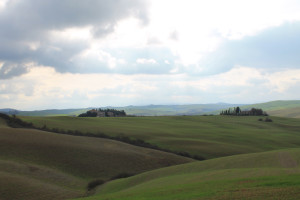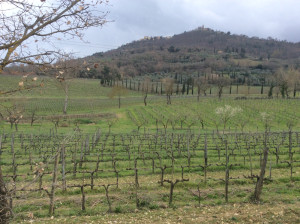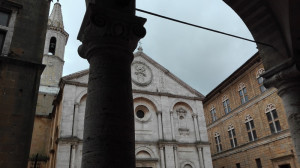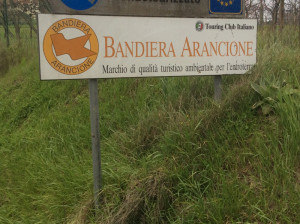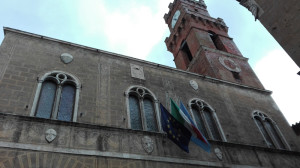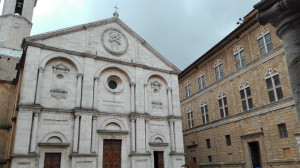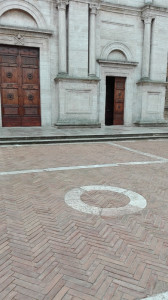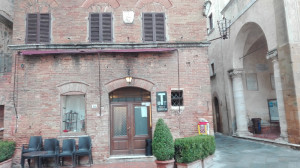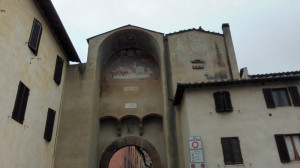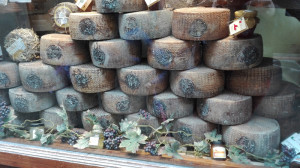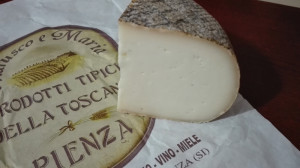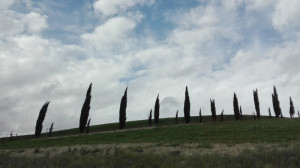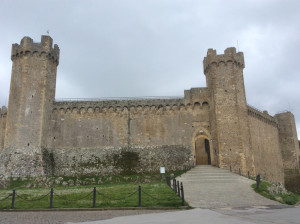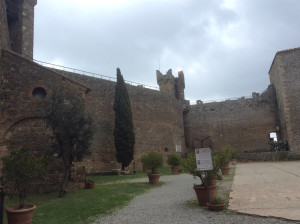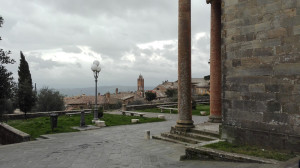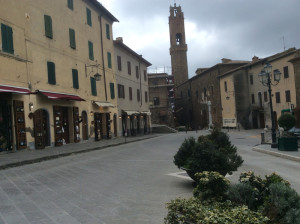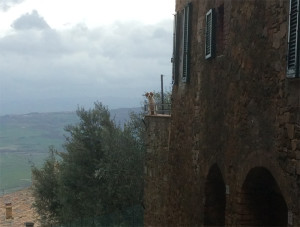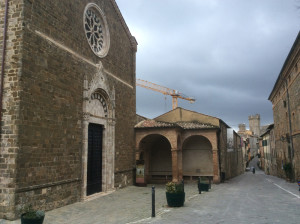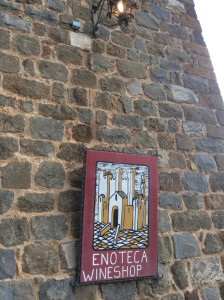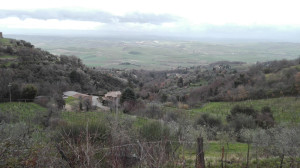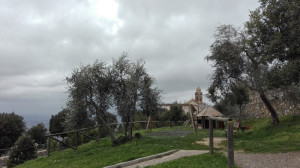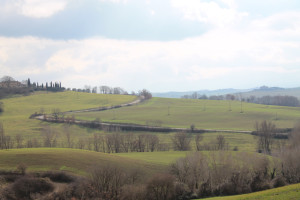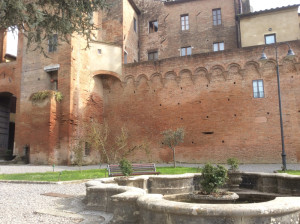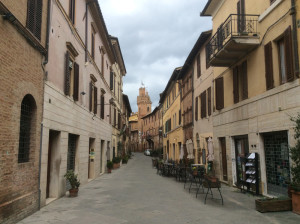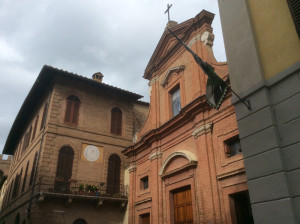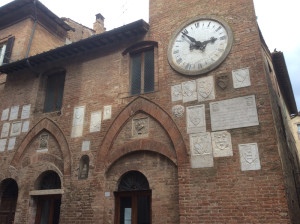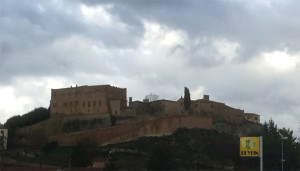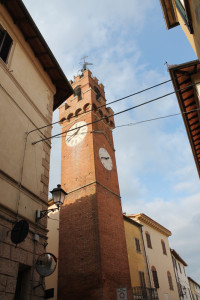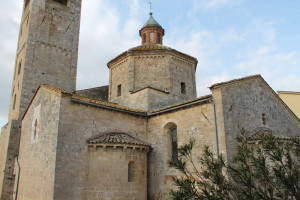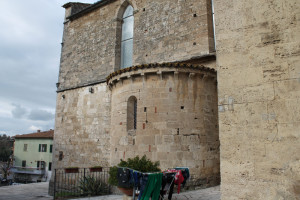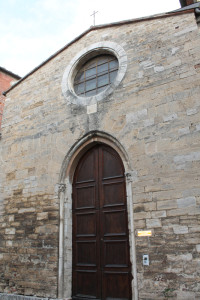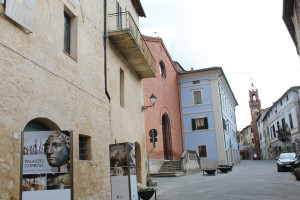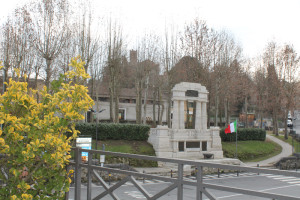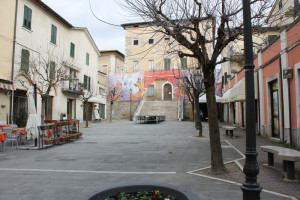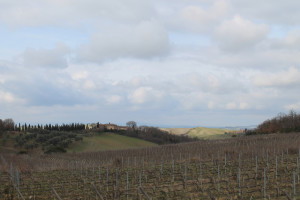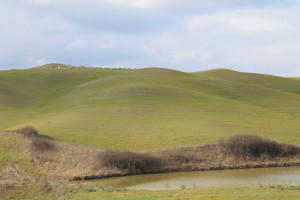Welcome to the Lands of Siena!
Val d’Orcia represents an important natural, artistic and cultural area. In 2004 it was added to the list of UNESCO World Cultural Landscapes for the excellently preserved panorama, which had a very strong impact on many Renaissance artists, and as “The Val d’Orcia is an exceptional reflection of the way the landscape was rewritten in Renaissance times”.
If you are staying in Siena, you could use a day or two and head south to explore the mystical countryside of Val d’Orcia, visit Pienza, Montalcino and other towns in the area. Between November and April you can still expect pleasant weather and avoid the stress of the high tourism season.
Pienza is a photogenic Renaissance-planned town nestled in the scenic landscape of Val d’Orcia on the Montepulciano – Montalcino axis. This is the best area to enjoy the quintessentially Tuscan landscapes with gentle, carefully cultivated hills, picturesque olive groves and vineyards and towns proudly marked with orange flags, awarded by the Touring Club Italiano (TCI) for excellency in hospitality and territorial identity.
Pienza’s history is tightly bound to Pope Pius II of the Piccolomini family, born here in 1405, and his will to transform in the 1400s the little medieval village named Corsignano into a truly Renaissance Papal residence, renamed Pienza after the Pope.
The Town Hall and the main buildings face Pienza’s main square, Piazza Pio II. Facing Town Hall is the Cathedral, a church whose simple Renaissance façade boasts the Piccolomini family coat of arms.
In this very square every year in September the Palio del Cacio al Fuso takes place: a contest, pitting six neighbourhoods of the town against each other, followed by a feast.
The target (il Fuso, a wooden spindle) is placed in the centre of a marble circle, left in Piazza Pio II by Bernardo Rossellino (sculptor and architect), and other circles are drawn in chalk around it. The players kneel on the carpet and roll a round of Pecorino di Pienza cheese, trying to aim as close to the centre of the ring as possible in order to score more points.
Il Caffè La Posta, the famous café on the corner of Piazza Pio II and Corso Rossellino, the setting for an Italian coffee brand ad in the 1990s. Italianize your coffee habits here: drink it standing up at the bar. Your coffee here is a must!
Nearby, the town’s main drag, Corso Rossellino, an atmospheric lane lined with shops featuring the work of artisans and producers.
A World Heritage Site since 1996, Pienza’s old town centre is probably the richest of Val d’Orcia in history, art and culture.
Sit at a café on the main square or wander the main street with a smattering of shops; head to an enoteca for a glass of Tuscan wine and find its perfect accompaniment savouring the delights of the area, like the aforementioned and delicious Cacio di Pienza. Take advantage… and maybe, take some home!
Montalcino, the wine-lovers’ paradise, is easily reached from Siena following the Cassia route ss2.
The historical centre of Montalcino is dominated by the mighty Rocca (the Fortress, built in 1361) that gives us a glimpse into the medieval town and offers dramatic views of the Orcia Valley.
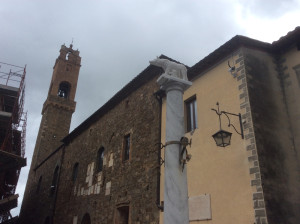
The narrow streets of Montalcino with their stone pavements are truly enchanting, and crawling with wine-loving tourists. In 1967, a small group of winemakers founded the Brunello di Montalcino consortium.
Head to the atmospheric enoteche to appreciate this famous wine, which ranks among Italy’s finest and most prestigious. Its precious formula, invented in 1888 by Ferruccio Biondi Santi, uses only Sangiovese grapes.
Crete Senesi is the area southeast of Siena, where the landscape is often described as lunar due to the distinctive grey colour of the soil. This characteristic clay represents the sediments of the Pliocene Sea which covered the area between 2.5 and 4.5 million years BP.
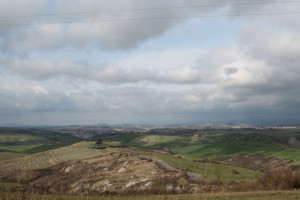
You can drive through the Tuscan countryside connecting the hilltown dots, and perhaps accompany this with a visit to some local producers.
Buonconvento is a medieval town 25 km southeast of Siena, that welcomes us to the Crete Senesi area. It is officially listed among the Most Beautiful Italian Villages. The old town centre is still surrounded by the walls built between 1371 and 1385 to defend and fortify the town.
The Church of SS. Peter and Paul houses an Enthroned Madonna with Child and Angels by Mateo di Giovanni (c. 1450) and a fresco of the early 15th-century Sienese School.
The buildings recount the history of the town, like the Town Hall façade with a clock and its 25 coats of arms of the podestàs, high officials who governed Buonconvento until 1270.
San Giovanni d’Asso, about 30 kilometres southeast of Siena, is overlooked by a large castle, now home to a large white truffle museum. There is a festival celebrating the rare and fragrant tuber each year – Sagra del Tartufo Marzuolo, in March.
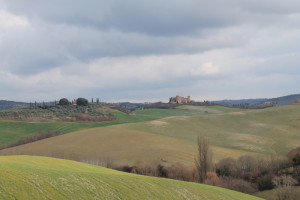
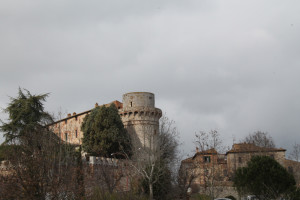
Asciano is a tiny town right in the heart of the Crete. Easy to visit and with its own subtle charms, I guess it remains a good stop.
A 5th century BC Etruscan necropolis excavated nearby and the Roman baths remains (with a fine mosaic pavement found in 1899) bear witness to the Etruscan and Roman former presence here.
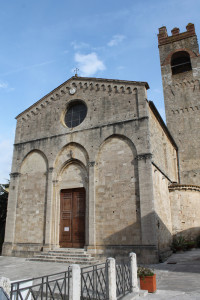
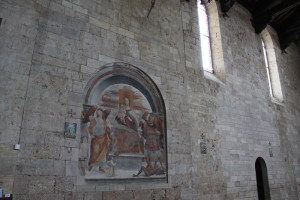
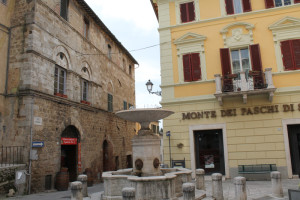
Corso Matteotti introduces the visitor to the Gothic Church of San Bernardino and the Church of St. Augustine.
It doesn’t take long to walk each lane in the tiny town.
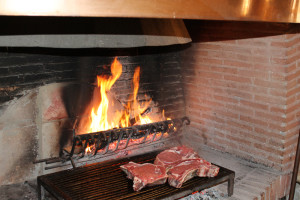
The history of Crete and Val d’Orcia dates back to the Etruscans and offers rich cultural experience, with lots of works of art, as well as high quality gourmet products, like i Pici (long thin homemade pasta typical of the Crete), i salumi di Cinta Senese, il Pecorino di Pienza, il Brunello di Montalcino, oil and saffron, that can be worth a short trip.
I found the whole area enchanting and a delight to explore, with all its rustic good living, gentle beauty and fascinating history. Of course, these towns make a great hill town day trip from Siena, and are best enjoyed by adapting to the pace of the countryside.
